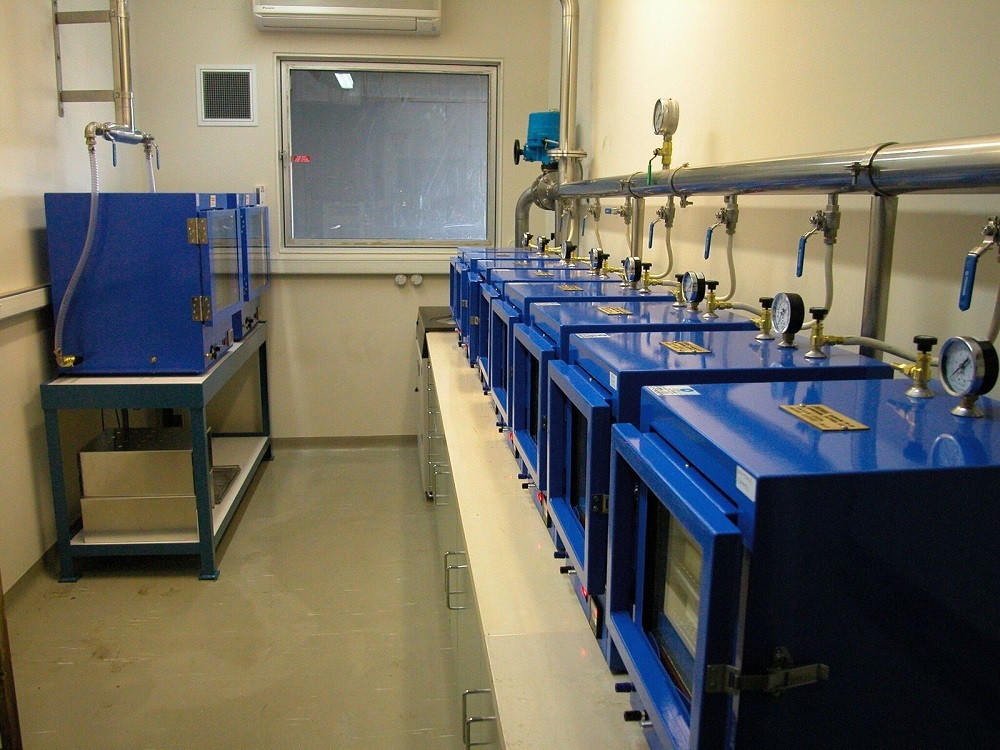A vacuum oven is completely different from a normal oven as they are better in removing undesirable contamination and preventing surface reactions, like oxidation. A vacuum oven is also ideal to reduce heat loss caused by convection in regular oven. Therefore, they are popularly used in industries across the world. In such an oven, the thermal process takes place inside an airtight chamber where an external pump applies vacuum. This technology creates a controlled atmosphere inside the oven. The vacuum ovens are mainly constructed with double walls made of mild steel, while the inside walls are constructed using stainless steel. These construction materials enable the equipment to deliver the desired optimum functions. The important aspect of the oven is that you have to determine the size of the external pump in order to create the desired vacuum inside the chamber of the oven in consideration with the size of the chamber. But, remember to consider the type of material you are going to process.
 |
| Vacuum Oven |
Types of Commonly Used Vacuum Ovens
There are diverse uses of vacuum oven, irrespective of the type of industry. You can find their uses in the industries from automobile to aerospace. In fact, these ovens are indispensable in any industry dealing with metals and ceramics. They can be customized and tailored according to your need and specification. However, you can find the following types of ovens those are most commonly used:
#1. Horizontal Vacuum Oven with Hinged Door
These high-performance ovens are used for brazing, sintering, diffusion bonding, aluminizing, vacuum heat treatments, advanced ceramics, etc. they are highly advantageous in terms of their great flexibility.
#2. Horizontal Vacuum Oven with Cart Bottom Door
These ovens offer great safety. They are very durable and are used for processing heavy and large loads. They are unique for heat treatments, diffusion bonding, vacuum brazing, etc with great results.
#3. Vertical Vacuum Oven with Bottom or Top Load
They are widely used for UHV or Ultra High Vacuum, advanced ceramics, brazing, etc. and the main advantage of this type of oven is its space-saving design.
 |
| Vacuum Oven |
Basic Features in a Vacuum Oven
You should have an idea about the standard features that a reliable oven must have to consider to be suitable for industrial use. You can have a look on the following basic features:
- The exterior is constructed using heavy and most durable steel of the highest quality. This steel body is duly power coated that provide superior support in all kinds of processing in any industry.
- The vacuum oven is developed by using easy to clean stainless steel interiors. The silicon based gasket of the door provides support that helps in maintaining vacuum level inside. The door is secured by latch and has silicon rubber door gasket that provides tight seal. The door also has a wide view glass that is protected by safety shield support. The interior also has convenient backed steel cabinets with removable solid aluminum shelves.
- Basically, these ovens are designed to provide optimum temperature in a uniform manner. The temperature can be raised up to 5720 degree F or 3000 degree C. They have a hydraulic primary control thermostat and a secondary safety thermostat. This secondary thermostat protects excessive temperature. The radiant walls of the oven ensure uniform temperature inside the chamber and allow use of entire work space. The temperature inside the chamber can be measured by a microprocessor based PID digital temperature indicator-cum-controller installed with the equipment. The essential insulation support is provided using mineral wool that provides great thermal stability.
- They are equipped with support systems like, control and release valves, vacuum gauge etc, allowing plating, curing, drying, vacuum embedding and many other industrial applications.






0 Comments